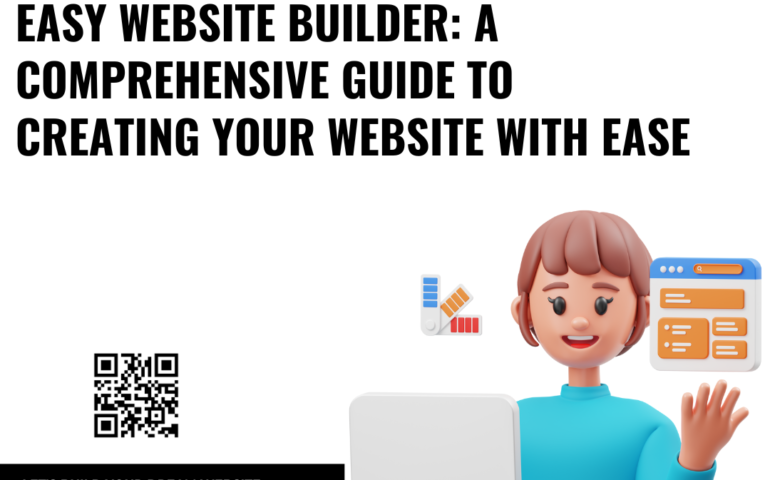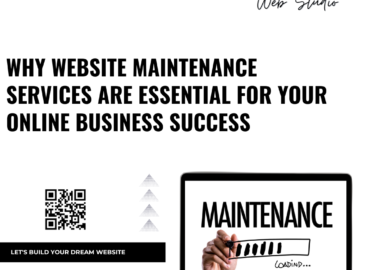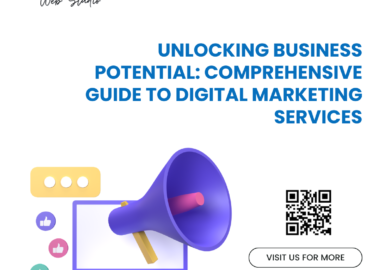
Easy Website Builder

In today’s digital age, having a website is crucial for personal branding, business, or simply sharing your passion with the world. However, many people feel overwhelmed by the idea of building a website, fearing it’s too complicated or requires technical expertise. Fortunately, with the advent of easy website builders, anyone can create a stunning, functional site with minimal effort. In this comprehensive guide, we’ll explore how you can leverage these user-friendly tools to design your perfect website, regardless of your technical skills.
Why Choose an Easy Website Builder?
Simplified Design Process
One of the primary advantages of using an easy website builder is the simplified design process. Unlike traditional web development, which often involves coding and complex design principles, these builders provide intuitive, drag-and-drop interfaces. This means you can design and customize your site by simply dragging elements into place, making it accessible even if you have no prior design experience.
Cost-Effective Solution
Traditional website development can be expensive, especially if you hire professional designers or developers. Easy website builders offer a cost-effective alternative, with many platforms providing free plans or affordable subscription options. This allows you to create a high-quality website without breaking the bank.
Time Efficiency
Building a website from scratch can be a time-consuming process. Easy website builders streamline this by offering pre-designed templates, allowing you to set up a professional-looking site in a fraction of the time. You can have your website up and running within hours, not weeks or months.
User-Friendly Features
Modern easy website builders come equipped with a range of user-friendly features, including:
- Pre-designed Templates: Choose from a variety of professionally designed templates tailored to different industries and needs.
- Drag-and-Drop Editor: Customize your site effortlessly by dragging and dropping elements.
- SEO Tools: Built-in SEO tools help optimize your site for search engines, improving your visibility online.
- Mobile Responsiveness: Ensure your website looks great on all devices, from desktops to smartphones.
- Customer Support: Access to support teams to assist with any issues or questions.
Key Features to Look for in an Easy Website Builder
Customization Options
When selecting a website builder, it’s important to choose one that offers ample customization options. This includes the ability to modify layouts, colors, fonts, and other design elements to align with your brand or personal style. A good website builder should provide a range of customizable templates and design tools.
Integration Capabilities
Your website may need to integrate with other tools and platforms, such as social media, email marketing services, and e-commerce solutions. Ensure the website builder you choose supports these integrations, enabling you to enhance the functionality of your site and streamline your operations.
SEO Features
To achieve high search engine rankings, your website builder should include essential SEO features. Look for tools that allow you to edit meta tags, create sitemaps, and add alt text to images. These features are crucial for optimizing your site’s visibility and attracting organic traffic.
Ease of Use
The core benefit of an easy website builder is its user-friendliness. Choose a platform that offers a straightforward interface, clear instructions, and a minimal learning curve. This will ensure that you can create and manage your site efficiently without needing extensive technical knowledge.
Pricing and Plans
Evaluate the pricing structure of different website builders to find one that fits your budget. Many platforms offer free plans with basic features, as well as premium plans with advanced functionalities. Consider your needs and choose a plan that offers the best value for your money.
Step-by-Step Guide to Creating Your Website with an Easy Website Builder
1. Choose the Right Website Builder
Start by selecting a website builder that meets your needs. Popular options include Wix, Squarespace, and Weebly. Each platform offers different features and pricing plans, so compare them based on customization options, integrations, and ease of use.
2. Sign Up and Select a Template
Once you’ve chosen a website builder, sign up for an account. Browse through the available templates and select one that suits your website’s purpose. Templates provide a foundation for your site, which you can customize according to your preferences.
3. Customize Your Template
Use the drag-and-drop editor to customize your template. Add or remove elements, change colors and fonts, and adjust the layout to match your brand. This is where you can get creative and make your website unique.
4. Add Content
Populate your website with content, including text, images, and videos. Ensure that your content is engaging, relevant, and optimized for SEO. Use headings, subheadings, and keywords to improve readability and search engine rankings.
5. Set Up Essential Pages
Create and configure essential pages such as Home, About, Services, and Contact. Each page should serve a specific purpose and provide valuable information to your visitors. Make sure your navigation menu is user-friendly and intuitive.
6. Optimize for SEO
Utilize the SEO tools provided by your website builder to optimize your site. This includes adding meta descriptions, optimizing images with alt text, and creating a sitemap. Regularly update your content and monitor your site’s performance to maintain high search engine rankings.
Common Mistakes to Avoid When Using an Easy Website Builder
Overloading with Content
While it’s important to provide valuable content, avoid overloading your website with too much information. This can make your site cluttered and difficult to navigate. Focus on delivering clear, concise content that aligns with your site’s purpose.
Ignoring Mobile Optimization
With the increasing use of mobile devices, it’s essential to ensure your website is mobile-friendly. Test your site on various devices and screen sizes to ensure it looks and functions properly across all platforms.
Neglecting SEO
Even with an easy website builder, neglecting SEO can hinder your site’s visibility. Make use of all available SEO tools and best practices to improve your search engine rankings and attract organic traffic.
Using Generic Templates
While templates can provide a great starting point, relying on generic designs can make your website look like others. Customize your template to make your site stand out and reflect your unique brand or personal style.

Essence of Easy Website Builder
Creating a website doesn’t have to be a daunting task. With the right easy website builder, you can design a professional-looking site effortlessly. By choosing a user-friendly platform, leveraging its key features, and following our step-by-step guide, you’ll be well on your way to building a stunning website that meets your needs. Remember to avoid common mistakes and continuously monitor your site’s performance to ensure its ongoing success. Happy building!
If you want to read more information about how to boost your website traffic, just visit –> TekHive




